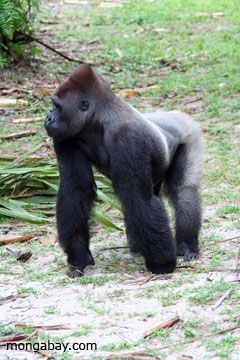Debt-for-Nature Swap Protects Forest in Cameroon
Debt-for-Nature Swap Protects Forest in Cameroon
World Wildlife Fund
June 22, 2006
Further conservation needed to protect forests from destruction
France and Cameroon signed the first ever Central African debt for nature swap today. This agreement will invest at least $25 million over the next five years to protect part of the world’s second largest tropical forest, home to elephants, gorillas, hundreds of bird species and indigenous groups such as the Ba’Aka pygmies.
The agreement comes from France’s Debt Development Contract (C2D) a complement to the Heavily Indebted Poor Countries initiative (HIPC), a joint initiative of the World Bank and International Monetary Fund. The HIPC’s goal is to reduce the excessive debt faced by the world’s poorest nations. The goal of C2D is to provide complete debt relief of the concessional loans France contracted to other countries. Twenty-two countries are eligible for C2D. The total amount of C2D debt relief is $4.6 billion.
The document requires Cameroon to earmark funds among four different sectors: education, health, infrastructure and natural resources. This is the first C2D agreement to allocate funds to natural resources. Previously funding had only been allocated to the education and health sectors, but, after French president Jacques Chirac stressed the importance of natural resources in poor countries last July, World Wildlife Fund (WWF) worked with both countries to include conservation in Cameroon’s debt forgiveness plan.
 Silverback lowland gorilla. Photo by R. Butler RELATED ARTICLES Roads tied to bushmeat hunting in Africa |
“The importance of this unique and history making agreement lies in the combination of debt forgiveness and investment in forest conservation and local communities,” said Laurent Some, director of WWF’s Central Africa Regional Program Office.
Through the funds the Forest and Environment Development Program, a program to reduce poverty while protecting and managing natural forestry resources, will be implemented. The funding will be used to better manage protected areas, wildlife and forest production and increase community forest resources and research capacity. The program is designed to secure some 40 protected areas and increase the present protected area network from 14 to 17 percent of the national land area.
Illegal logging and an underdeveloped infrastructure threaten Cameroon’s forests. As a solution, the program calls for working alongside forest companies to develop management plans and a demand for certified, environmentally friendly products. Employing 12,000, the forest sector is Cameroon’s largest private employer and the second largest source of export revenue after oil. However, forest sector employment has dropped in recent years, so funds will also be used to re-establish two national forestry schools to train the new recruits.
WWF sees this agreement as a concrete example of the commitment expressed by the region’s heads of state at the Brazzaville summit in February 2005 and looks to other nations to follow France and Cameroon’s lead.
This article is a modified news release from the World Wildlife Fund.